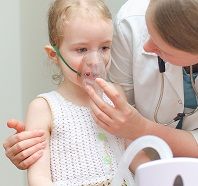Identifying and Managing Potential Cases of Enterovirus D68 Infection
The actions and experiences of staff at Children's Mercy Hospital in Kansas City, MO, provide many lessons for clinicians at other facilities who may be dealing with an increase in EV-D68 cases.

Human enterovirus D68 (EV-D68) is not a typical enterovirus. “Typical” enteroviruses are highly contagious, presenting with non-specific febrile illnesses, and are mainly associated with Hand, Foot and Mouth Disease (HMFD). Cocksackie A-16 virus is the most common cause of HFMD.
EV-D68 shares clinical and epidemiologic characteristics with the rhinoviruses. It was first identified in California in 1962 but reports of associated disease rarely surfaced over the next 38 years. The virus usually causes mild to severe respiratory illness, mostly in infants, children, and teens. However, the full spectrum of EV-D68 illness is not well-defined.
At the 2014 AAP National Conference & Exhibition in San Diego, CA, Angela L. Myers, MD, MPH, a specialist in pediatric infectious diseases at the Children’s Mercy Hospital in Kansas City, MO, described the recent major outbreak of EV-D68 disease in the US which was first reported by her institution.
Myers is an Associate Professor of Pediatrics at the University of Missouri-Kansas City School of Medicine in Kansas City, MO. Children’s Mercy Hospital is on the state line between Kansas and Missouri and serves a large population from 100 counties in 5 states.
On August 15, 2014, an alert pediatric nurse at Children’s Mercy Hospital in Kansas City, MO, circulated a memo reporting that she had personally seen 5 or 6 children with respiratory distress in the previous 24 hours who seemed disproportionally ill for their histories. Most of them did not have major fever. All responded to asthma medications, although only 2 or 3 had previous histories of asthma. One child had to be transferred to the Pediatric Intensive Care Unit (PICU).
The Microbiology Laboratory Director, Dr. Selvarangan, looked into the records. He compared weekly entero/rhinovirus detections for 2013 with those for 2014 to date. The chart showed a dramatic surge in cases from 30 per week for the two weeks prior to the spike rising to a figure of greater than 200 cases at the peak. Only 7 cases had been reported for the corresponding week in August 2013.
Between August 20 and August 22, 2014, Children’s Mercy KC initiated a major response to this event involving hospital-wide coordination and delegating representatives from many different departments across many functions. These activities included an e-mail blast to comparable institutions across the United States subscribing to the Pediatric Emergency Medicine Discussion List (1000 subscribers worldwide) asking whether they had noted a similar phenomenon. There were 3 negative responses and 10 positive responses from 10 different locations.
EV-D68 was confirmed at Children’s Mercy Hospital, Kansas City, on August 26, 2014.
A total of 21 of the 22 initial cases met the hospital clinical definition for the infection and 19 of these were confirmed positive. The others were identified as two cases of rhinovirus and one case of Coxsackie-A2 virus with a complex febrile seizure.
Myers reviewed the clinical characteristics of the first 33 confirmed cases from both sides of the state line. Missouri provided 25 cases and 8 were from Kansas. Symptoms included paucity of fever and an unusually severe asthma-type presentation. Patients were tachypneic and hypoxic with one third exhibiting wheezing. They were slow to respond to albuterol. One third of these patients had never wheezed in the past. Thirty of the initial cohort required escalated treatment for severe bronchospasm and respiratory failure in the PICU and one infant reported with pulmonary hemorrhage.
Myers showed a graph of the disease extent and severity impact on PICU transfers and admits for August and September, 2014. The plot suggests a tailing off from the peak at the end of August. By September 11, 2014, presumptive cases from Kansas and Missouri plus four from other states were as follows: 621 detections and 475 admissions. This is more than 50% higher than the peak average daily census for the previous two years.
She went on to describe the tremendous impact of the outbreak on the overall functioning and organization of the hospital, and on the Division of Emergency & Urgent Care in particular, which necessitated support from the whole medical community in Kansas City.
There are new concerns about polio-like illness with the cluster of pediatric cases with acute focal limb weakness reported in Colorado. In those patients, MRI scans show evidence of spinal cord lesions limited to gray matter. EV-D68 is the primary suspect but the virus has not been isolated by culture or detected by PCR from cerebrospinal fluid from the California or Colorado cases.
Providers should recognize that other respiratory pathogens are circulating concurrently and be on the look-out for unusual EV-68 manifestations, including polio-like illness, particularly in children.